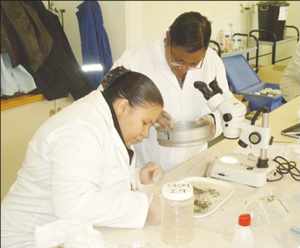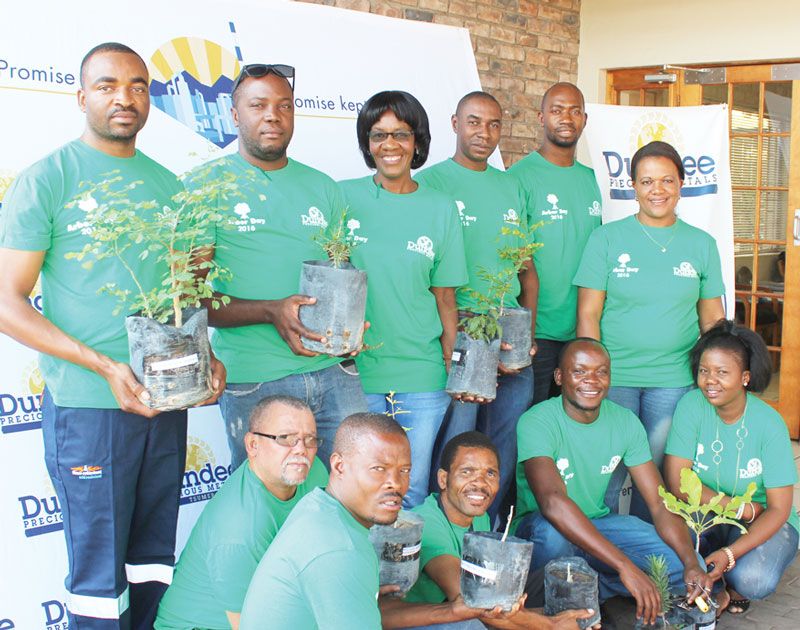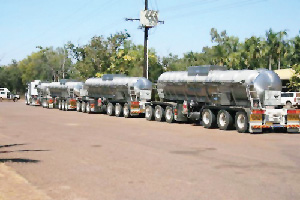
Debmarine explains environmental management approach

Debmarine Namibia Environmental Manager Snerry Mungungu, with Senior Environmental Scientist Aletia Bock conducting a sample-sorting process before laboratory analysis of microbial content and spread
The committee provides advice on the seabed-monitoring design, analysis techniques and interpretation of the results for planning the monitoring programme.
Debmarine said in a statement issued to the Economist, “The Benthic Monitoring programme is an on-going research survey that uses a grab sampler to collect seabed sediment samples which are analysed to assess the state of the seabed communities. Samples are collected for both mined and un-mined sites in order to assess potential impacts from natural disturbance.”
The sampling survey is done annually over a period of three months, starting in October, to build up information on the effects of mining and recovery.
The key objective of the benthic survey programme, Debmarine said, is to investigate the effects of marine mining on benthic communities of soft-sediment habitats to determine the rate of recovery of these communities after disturbance by mining operations. The benthic sample analysis is conducted by independent scientists, and each annual report is peer-reviewed by recognised expert scientists.
Thus far, a total of 25 environmental mining sites have been identified within the mining area, and they form part of the Benthic Monitoring Programme.
The outcome of the most recent research report released in 2011 indicated that the recovery rate is estimated to be between four to 15 years, dependent on the nature of the sediments and processes in the area, Debmarine said. The recovery rate as defined by Debmarine is indicative of the recovery of ecological functioning through the recolonisation by marine life in mined areas as compared to that of sites not mined, thus resulting in an assessment of adequate ecological functioning.
Debmarine mines in the Atlantic 1 Mining Licence Area off the southern coast of Namibia in water depths ranging from 90 to 140 metres. No active rehabilitation can take place at these water depths, so the focus is on monitoring natural seabed recovery. This is achieved through the Benthic Monitoring Programme forming part of Debmarine Namibia’s environmental management system.
The company operates five diamond mining vessels, namely Debmar Atlantic, Debmar Pacific, !Gariep, Grand Banks and Mafuta. Two mining technologies are deployed, the airlift-drill and the crawler mining technology. The mining vessels mine diamonds off the ocean floor using highly advanced drill technology and supported with sophisticated tracking, positioning and surveying equipment. Debmarine Namibia is a JV marine and diamond prospecting and operating company owned in equal share by the Government and De Beers.












































